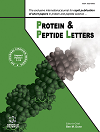
Full text loading...
This study aimed to investigate the anti-carcinogenic effects of recombinant L- methioninase (rBlmet) on the pancreatic cancer cell line MiaPaCa-2.
In this study, rBlmet was initially cloned, expressed, and purified. To increase enzyme activity, the His-tags on the enzyme were removed using thrombin. rBlmet was then applied to MiaPaCa-2 cells, and the cell viability of MiaPaCa-2 cells was evaluated by neutral red assay after rBlmet treatment. The combined effect of etoposide with rBlmet against MiaPaCa-2 cells was also evaluated for 12 and 24 hours using a neutral red assay. Furthermore, cell morphology was evaluated by Giemsa and DAPI/F-actin staining methods. Survivin and caspase-3 gene expression levels were measured by RT-qPCR.
The specific activity of the enzyme increased after His-tag elimination to 5.62 µmol/mg per minute. rBlmet showed a significant cytotoxic effect on the MiaPaCa-2 cell line. The IC50 value (24 h) of rBlmet for MiaPaCa-2 cells was 3.02 U/mL. In addition, rBlmet increased the cytotoxic effect of etoposide on the MiaPaCa-2 cell line, while it showed less effect on HaCat, which is a normal human cell line. Furthermore, rBlmet increased caspase-3 expression and downregulated survivin gene expression in MiaPaCa-2 cell lines. It successfully inhibited the growth of Mia-PaCa-2 cells by exploiting exogenous methionine amino acid in the growth medium. This study revealed promising results. However, further studies are needed on additional pancreatic cancer cell lines and in vivo models.
Based on these findings, it can be concluded that rBlmet not only has great potential to treat pancreatic cancer in the future but can also be used as an adjuvant to enhance the effectiveness of chemotherapeutic agents like etoposide.

Article metrics loading...

Full text loading...
References


Data & Media loading...
Supplements

